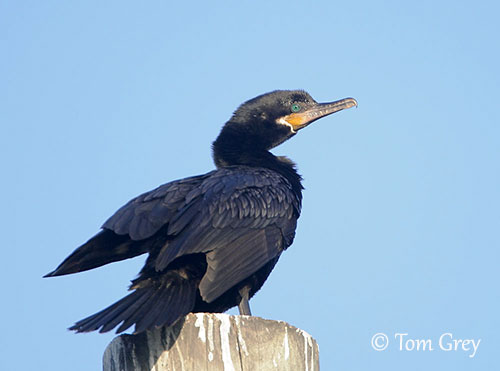
Fr: Cormoran vigua
Ang: Neotropic Cormorant
All: Olivenscharbe
Esp: Cormorán Biguá
Ita: Cormorano neotropicale
Nd: Bigua-aalscholver
Sd: amazonskarv
Photographers:
Roger Ahlman
Pbase Galleries Peru and Ecuador & My bird pictures on IBC
Didier Buysse
Vision d’Oiseaux
Tom Grey
Tom Grey's Bird Pictures & Tom Grey's Bird Pictures 2
Eduardo Andrés Jordan
MIS AVES – AVES DE ARGENTINA
Philippe and Aline Wolfer
OISEAUX D'ARGENTINE
Text by Nicole Bouglouan
Sources:
HANDBOOK OF THE BIRDS OF THE WORLD vol 1 by Josep del Hoyo-Andrew Elliot-Jordi Sargatal - Lynx Edicions - ISBN: 8487334105
A GUIDE TO THE BIRDS OF MEXICO AND NORTHERN CENTRAL AMERICA by Steve N. G. Howell, Sophie Webb - Oxford University Press - ISBN: 0198540124
All About Birds (Cornell Lab of Ornithology)
The Birds of North America online
Animal Diversity Web (University of Michigan Museum of Zoology)
What Bird-The ultimate Bird Guide (Mitchell Waite)
Aspects of the breeding biology of the Neotropic Cormorant
Wikipedia, the free encyclopaedia
Neotropic Cormorant
Phalacrocorax brasilianus
Suliformes Order – Phalacrocoracidae Family
INTRODUCTION:
The Neotropic Cormorant is very similar to the Double-crested Cormorant but it is slightly smaller. It occurs throughout the American tropics, and two subspecies share the large range extending widely to South America.
This species frequents a variety of aquatic habitats with fresh, brackish and salt water.
The Neotropic Cormorant is widespread and the population is suspected to be increasing in North America.
DESCRIPTION OF THE BIRD:
Biometrics:
Length: 64-69 cm
Wingspan: 100-102 cm
Weight: 1,200-1,400 g
The Neotropic Cormorant in breeding plumage has black head, neck and most of the body, with some bluish or purplish sheen.
The upperparts are olive-brown to dull bronzy-brown, with conspicuous scaled pattern. The tail is duller blackish.
On the underparts, the underwing is black, with grey tinge on both flight-feathers and greater coverts.
On the head, a line of white feathers runs around the gular pouch and extends to the bill base and below the eye. Some white speckling can be seen on lores and around the eye, and there are white filoplumes above the eyes, extending to the neck sides. During the breeding season, these short, white filoplumes form white tufts just behind the ear-coverts.
The bill is yellow at base of lower mandible, but mostly blackish to greyish overall. The eyes are green. Legs and webbed feet are blackish.

The Neotropic Cormorant in non-breeding plumage is duller, mostly brownish-black. The white head pattern is less distinct and the white filoplumes are absent.
The bill is grey with pale grey spots on sides and sometimes darker tip.
Male and female are similar.
The juvenile is dull brown with browner head and neck. Throat and breast are paler, with sometimes pale brownish spotting on the breast, whereas the throat is whitish. The plumage of mantle to upperwing-coverts is paler and greyer.
On the head, gular pouch and gape are dull yellow. The eyes are dark (not green). The bill is yellowish.
SUBSPECIES AND RANGE:
The Neotropic Cormorant has two subspecies.
P.b. mexicanus is found in S USA (S Arizona to Louisiana) S to Panama, and also Bahamas and Cuba. The northern populations disperse southwards after breeding.
This race is smaller, with longer bill.
P.b. brasilianus (described above) occurs in Panama and S throughout South America to Cape Horn.
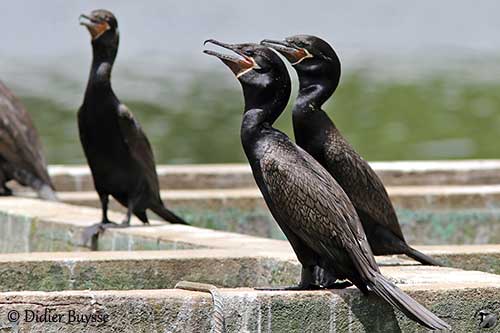
HABITAT:
The Neotropic Cormorant frequents fresh, brackish and salt waters. It can be found at lakes, marshes, small ponds, mangroves and coastal lagoons. It regularly occurs at sea, usually close to the shore. It can be found in saltwater bays, inlets, and protected estuaries. It may breed far inland around reservoirs with scattered trees.
CALLS AND SONGS: SOUNDS BY XENO-CANTO
The Neotropic Cormorant utters a guttural call when alarmed. The most common calls are low grunts and croaking sounds. Males are usually more vocal than females, but both are silent outside of breeding season.
BEHAVIOUR IN THE WILD:
The Neotropic Cormorant feeds typically on fish, amphibians, and aquatic insects.
It dives from the surface and swims underwater while pursuing a prey. Several birds may forage together, beating the water with their wings to drive aquatic prey into shallower waters.
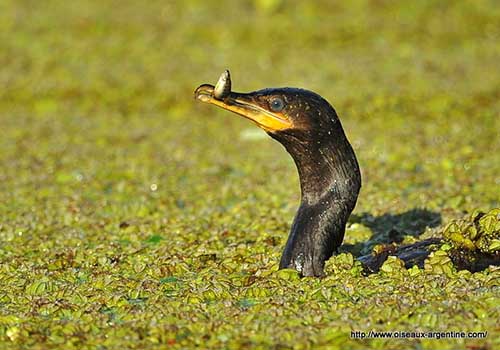
During the breeding season, some displays are observed. The male sits with tail raised and bill pointed up, while the wing tips are raised and lowered. Both mates stretch their necks up while the bill is open and the head is waving back and forth. They are colonial nesters.
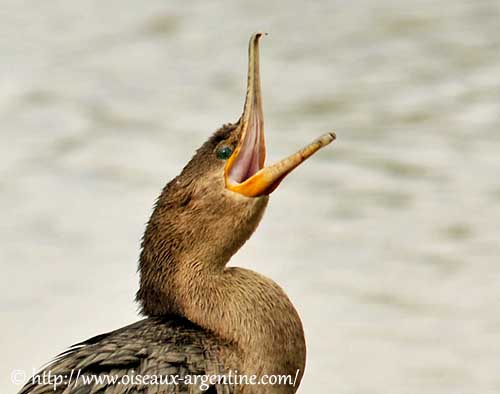
The Neotropic Cormorant is usually sedentary, but some post-breeding dispersions may occur.
The flight is strong and direct, with powerful, rapid wingbeats. During the flight, the head is slightly higher than the neck.
REPRODUCTION OF THIS SPECIES:
The breeding season may occur all year round, with some local variations often related to the wettest periods. This species breeds between May and August in USA.
The Neotropic Cormorant nests in colonies of up to 1,000 pairs, often with other bird species including Ardeidae, Laridae or Anhingidae.
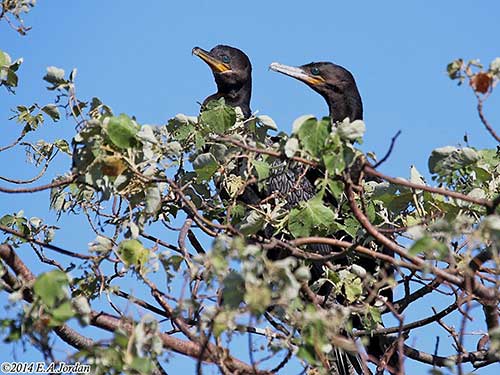
The nest is usually built in live or dead trees or bushes, between 3 and 25 metres above water. On islands, they may nest on the ground. The nest is made with sticks, and the inner cup is lined with twigs, grass, seaweed, feathers or shells.
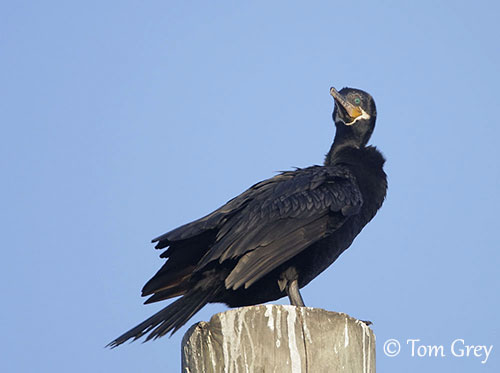

The female lays 3-4 bluish-white eggs. Both adults share the incubation during 25-30 days. The young are fed by both parents. They become independent about 10-11 weeks after hatching, but the young raised on islands are able to dive and swim at 8 weeks old.
PROTECTION / THREATS / STATUS:
The Neotropic Cormorant is widespread throughout the range. It may suffer some persecution in some parts of the range, due to competition with fishing activities.
The population is estimated to number 2,000,000 individuals, and is suspected to be increasing, especially in North America.
The Neotropic Cormorant is not globally threatened, and currently evaluated as Least Concern.